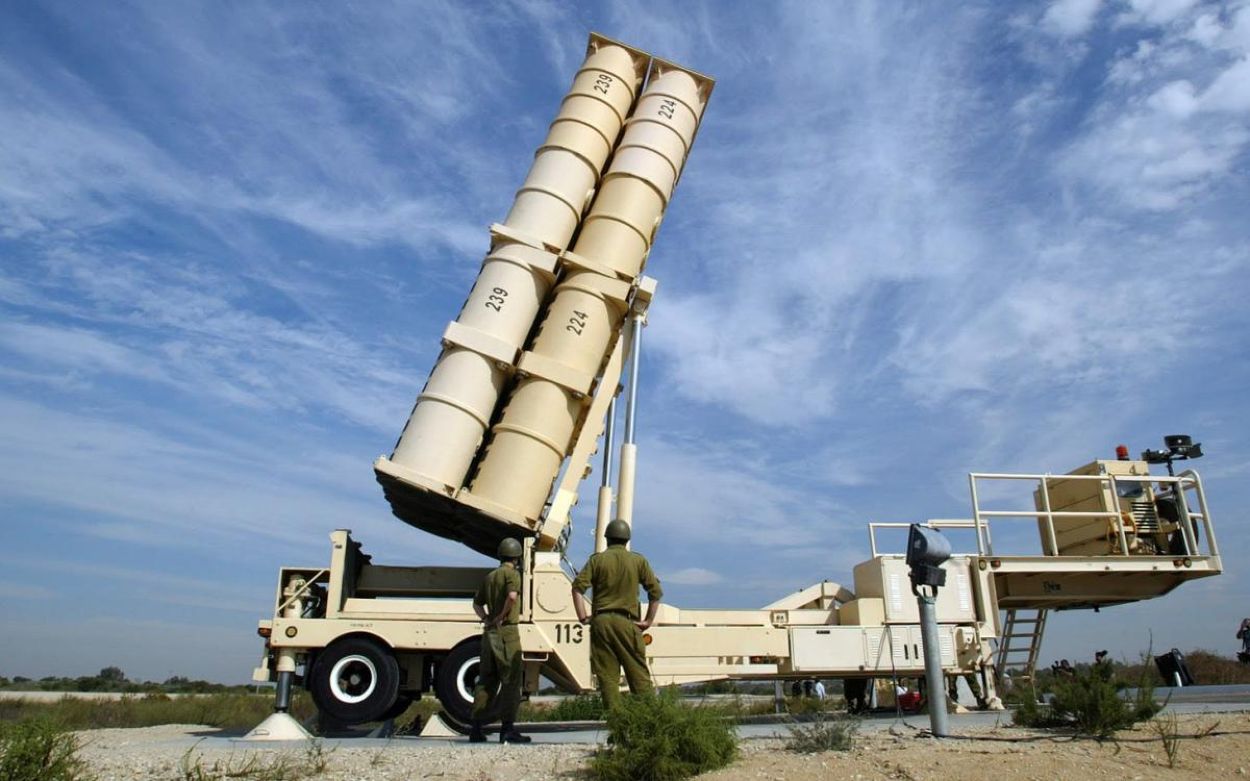In what appears to be preparations for a scenario that involves a clash with Iran, the US and Israel held major drills earlier this week that involved tackling a large missile barrage.
From F-35 To 6th-Gen FCAS, Joint Development Of Fighter Aircraft Storms The Global Defense Market
Leading US and Israeli surface-to-air missile (SAM) systems were employed in the drills that focused on shooting down large swarms of surface-to-surface missiles aimed at Israel – a situation only possible with Iran, given the country’s large and diverse arsenal of drones and ballistic missiles.
Tensions in West Asia have been consistently elevated, especially after Benjamin Netanyahu’s return as the Prime Minister, whose security forces have been clashing with the Palestinian resistance in the West Bank and maintaining a hardline on Iran.
Previous EurAsian Times analyses touched upon how Iran’s domestically developed ballistic missile and drone fleet has reached a technical sophistication and potential effectiveness that seriously threatens Israel or an attacking US naval force in the Persian Gulf.
The massive missile defense drills between Tel Aviv and Washington, therefore, validate the formidable military threat Tehran poses.
Massive Drills, Big Weapons
According to a report in the Times of Israel, the Defense Ministry on Thursday said it had wrapped up a joint air defense drill with the United States, which simulated a major rocket attack on Israel.

“The ministry said the drill included the use of the entirety of Israel’s multi-layered air defenses, made up of the short-range Iron Dome, the medium-range David’s Sling, and the long-range Arrow and Patriot systems,” the report added.
The US used Patriot, AEGIS, and THAAD systems. However, a highlight of the drill was Israeli and American air defenses being operated from Elbit’s so-called Israeli Test-Bed battle lab, which “presents real-time data that helps with a comprehensive investigation of the drill,” allowing the forces to update various procedures relating to the systems, the ministry said.
The report also quoted Oren Sabag, an Elbit official, saying the battle lab “allows to simulate complex aerial defense scenarios and serves as an advanced environment for integrated training and research capabilities,” calling the system “world-leading.” “We are proud to once again host this important joint exercise… and to contribute to the cooperation and strengthening of the air defense array of the State of Israel,” Sabag added.
This experimental component of the drill trying out a new battlefield management and data and sensor fusion platform suggests the results will inform the development of future missile defense systems in both countries.
The ministry said the joint drill comes as part of “the ongoing cooperation between the armies, is aimed at improving the level of competence of the troops, and increasing the coordination between the forces.”
Earlier Drills Had Iran in Mind
This is also not the first major military exercise between the US and Israel this year, as January saw the two countries hold Juniper Oak 2023, the largest joint exercise between Washington and Tel Aviv.
That exercise involved some 6,400 US troops alongside more than 1,500 Israeli troops and over 140 aircraft, 12 naval vessels, and artillery systems. This, too, had a significant anti-Iran slant.
The drills simulated “complex operational scenarios,” including aircraft and ships striking targets simulating naval threats, US B-52 bombers dropping live ammunition in southern Israel, and joint command and control in order to “enhance their shared ability to counter regional threats,” the IDF said.
‘Sudden, from All Sides & En Masse’
A Times of Israel report in August disclosed that the latest missile defense drills would “prepare Israel for a potential multi-front missile attack.” This validates previous EurAsian Times reports about Iran’s military doctrine that would focus on sudden, coordinated rocket and missile fires on Israel from Iranian proxies in Syria, Lebanon, Iraq, and mainland Iran itself, along with a limited ground action from Lebanese Hezbollah.
This would be meant to overwhelm Israel’s AD radars and complicate its military planning, which would have to contend with multiple aerial and ground strikes from three directions. Possibly, since many of the strikes would also involve cheap, unguided rockets and drone swarms, an Iranian goal could be to exhaust as many Israeli SAMs from its stocks.
Of course, this cannot be guaranteed to succeed, and both countries are equally vulnerable as their respective military doctrines are well-thought-out. Iran knows Israel is well aware of Tehran’s military thinking. It will likely exploit its strengths in clandestine espionage operations inside Iran and its powerful air force to deliver painful strikes on Iran’s military and nuclear facilities.
Iran does have a formidable AD system, but the IsAF has a legacy of being able to breach heavy anti-aircraft defenses from its previous operations in Egypt, Lebanon, and Syria.
On the contrary, Iran has a larger landmass, greater strategic depth, a self-made defense industrial complex, and an economy accustomed to punishing sanctions for nearly four decades that has gotten even more advanced with strategic support from China and Russia.
- The author can be reached at satamp@gmail.com
- Follow EurAsian Times on Google News